2021.11.30
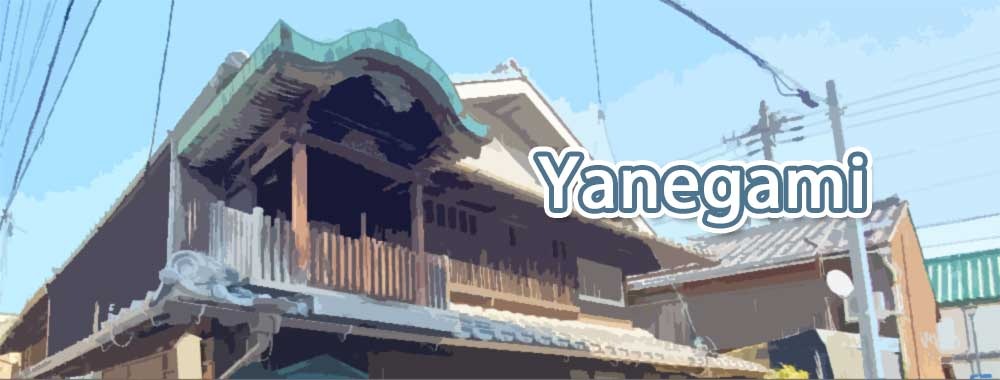
When walking through streets that still have vestiges of old Nagoya, one can sometimes spot a little shrine on the roof of a house. Known as yanegami-sama (屋根神様, 'venerable roof deity'), and sometimes as noki-no-kamisama (軒の神様, 'deity of the eaves'), or just kami-sama (神様, 'venerable deity') many of these roof shrines can be found in Nagoya City.
Some of these little shrines can actually be found below the eaves, or atop a dais.
While you may see a number of yanegami as you walk through certain parts of Nagoya, this particular form of worship is rare in Japan.
There are a number of scattered pockets of yanegami in Nishi Ward, particularly in the backstreets of the Biwajima (枇杷島), Sako (栄生) and Nagono (那古野) neighborhoods, where you can see roof shrines in a number of different styles, and not always on the roof. Why not try exploring these areas and see what you can find?
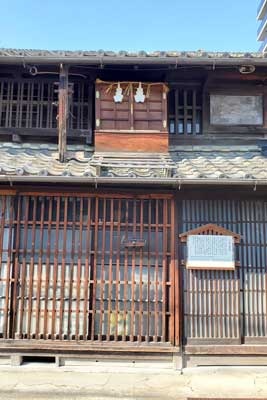
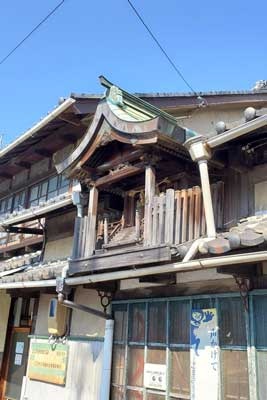
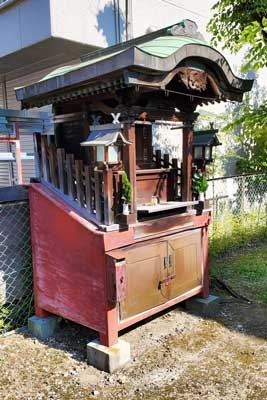
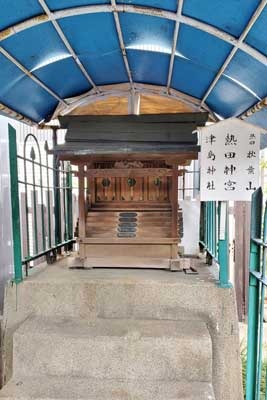
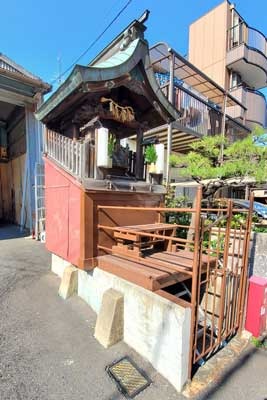
According to a survey conducted by Keshigawa Ritsuji of yanegami in 1975 and 1976, there were 2 in Chikusa Ward, 36 in Higashi Ward, 6 in Kita Ward, 129 in Nishi Ward, 26 in Nakamura Ward, 9 in Naka Ward, 4 in Showa Ward, 4 in Mizuho Ward, 12 in Atsuta Ward, 16 in Nakagawa Ward, and 10 outside Nagoya City, with an overwhelming majority located in Nishi Ward.
It is thought that the yanegami custom began in the early Meiji period, and was adopted more widely in the early Showa period.
The yanegami formerly of Kamejima 1-chome in Nakamura Ward (now held in the collection of the Nagoya City Museum) has a sloping base matching the incline of the roof. It was worshipped on the 1st and 15th days of the month, coinciding with the festive observances of Tsushima Shrine (Tsushima City), the local shrine (Mizuno-sha in Noritake 2-chōme) and Akiba Shrine (Akibasan Entsūji Temple in Atsuta Ward). A purple curtain-like decoration was attached, and offerings of sake and vegetables presented. Lanterns bearing the names of Tsushima Shrine, Atsuta Jingū (Atsuta Ward) and Akiba Shrine were also hung, and a fire lit as evening approached.
Tsushima Shrine, Atsuta Jingū and Akiba Shrine are common objects of worship through yanegami. Roof shrines were established in commercial and working-class neighborhoods where residences were densely situated, and fire in particular posed a serious threat to life and property, hence the worship of Akiba Shrine, which is said to ward against fire. Tsushima Shrine is worshipped because of its association with Ten'ō worship, which is said to prevent epidemics, infectious diseases being another concern in densely-populated neighborhoods. Providing protection from fire and illness, combined with the worship of Atsuta Jingū, yanegami themselves were worshipped as deities with a multi-faceted character.
The former Sanae-cho (now Meieki 2-chome) in Nishi Ward was divided into three kumi (組; groups or areas), each worshipping their own yanegami. One of the three, which was kept on a dais on a vacant lot between houses, is now held by Nagoya City Museum.
Here, too, a curtain and lanterns marked 'Atsuta Jingū', 'Akiba Jinja' and 'Tsushima Jinja' were hung on the 1st and 15th of the month. Offerings including miso, rice, and sake were made, and a fire lit as it began to grow dark. Responsibility for the role of tending to the yanegami would change monthly, hence duties were known as tsukiban (月番, 'monthly watch'). The attendant for the previous month would hand the new attendant a tablet marked 'kami-sama tōban' (神様当番, 'on venerable deity duty'), which would be hung outside the front door, and then handed to the next attendant at the end of the month.
This yanegami was retired sometime between 1955 and 1965. At the time, it was becoming harder to keep a fire going before the yanegami, and the decreased use of fire in everyday life meant that praying for protection from fire became less relevant. Changes to how the neighborhood was organized may also have been a factor, as the area and structure of new neighborhood associations differed to that of the older kumi, and as new residents moved into communities, fewer would join the kumi responsible for worshipping and maintaining the yanegami.
Changes in lifestyle and interaction in communities have seen the enshrinement of many yanegami cease, and fewer and fewer of the little shrines remain. The custom of yanegami worship itself, and its decline, is a reflection of the changes that have taken place in communities from the Meiji period to the present.
Reference: 屋根神, Nagoya City Museum website (Please see the website for photos of the yanegami referred to in the above text)




